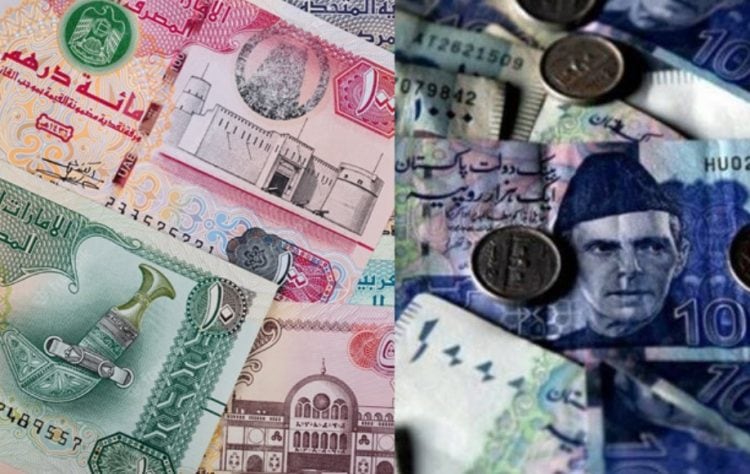KARACHI – The buying rate of UAE Dirham (AED) registered significant recovery against Pakistani rupee in open market where it stood at Rs77.58 on Thursday.
The selling rate of the Dirham also moved up and stood at Rs78.06, according to the Forex Association of Pakistan.
The UAE Dirham (AED) to Pakistani Rupee exchange rate holds great importance as millions of Pakistanis work in the UAE and send remittances every month.
Overseas Pakistanis residing in the UAE sent $717.2 million in wake of remittances in June 2025, grabbing second top position in the chart of the workers’ remittances as the first spot is held by Saudi Arabia.
Pakistan recorded workers’ remittances inflow of $3.4 billion in June 2025.
According to the data released by the State Bank of Pakistan (SBP) on Wednesday, workers’ remittances increased by 7.9 per cent on a year-on-year basis.
During fiscal year 2024-25, workers’ remittances rose by 26.6 per cent to $38.3 billion as compared with $30.3 billion in 2023-24.
Remittances during June 2025 were mainly sourced from Saudi Arabia ($823.2 million), United Arab Emirates ($717.2 million), United Kingdom ($537.6 million) and United States of America ($281.2 million).
How Strengthening Dirham Benefits Pakistanis Receiving Remittances
When the UAE Dirham strengthens against the Pakistani Rupee, it directly benefits Pakistanis receiving remittances from the UAE. Each Dirham sent converts to a higher amount in Rupees, increasing the value of financial support for families.
This helps cover essential expenses such as food, education, and medical bills more effectively. Stronger remittances also allow recipients to save more and invest in small businesses or property.
Additionally, it reduces financial stress and boosts confidence in managing daily living costs. A stronger Dirham enhances the impact of overseas workers’ efforts, making their contributions more meaningful to their families and communities.
Significance of Exchange Rate
Exchange rates determine the value of one currency in terms of another. They affect international trade, remittances, travel costs, and foreign investments. For remittance-receiving countries like Pakistan, favorable exchange rates can significantly increase the purchasing power of inflows, improving household income, economic stability, and development potential.
